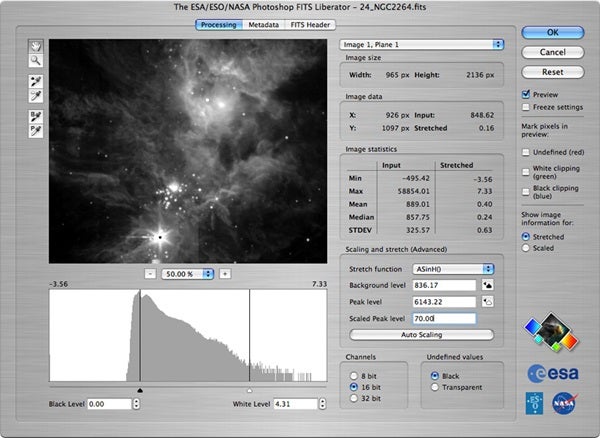Digital-camera users may already know their cameras embed information about aperture, shutter speed, and camera type in their photos. This embedded information is dubbed “EXIF” data. FITS Liberator takes this one step further by embedding astronomy-specific metadata — data that describe the image, such as a title, caption, and keywords — directly into the image as it is imported into Photoshop. Each image can contain its own full description, including the telescope used, the filters in each color channel, and even the target object’s sky coordinates.
These metadata are part of a standard for astronomical imagery metadata proposed to the International Virtual Observatory Alliance and the International Astronomical Union. The possibilities for this standard, if widely adopted, are extensive. An image’s embedded information will be available, even if the original web source is unknown. Digital planetaria will be able to download pictures and automatically place them in the right context on their virtual sky.
The FITS Liberator plug-in functions as an image-import plug-in to Adobe Photoshop (version 7 and later) and Photoshop Elements (version 2 and later). It runs on Mac OSX and Windows operating systems and may be freely downloaded here.
Lars Lindberg Christensen of ESA/Hubble heads up the FITS Liberator project. The software development team consists of Lars Holm Nielsen, Kaspar K. Nielsen, and Teis Johansen. Robert Hurt of the Spitzer Science Center provides scientific and technical support.
If you’re looking for existing astronomical images on which to try your image-processing skills using FITS Liberator, then visit the following web sites:










